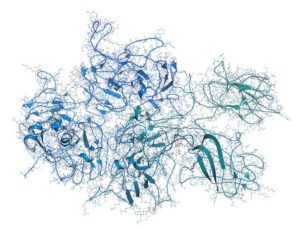Treatment for hemophilia A usually involves intravenous injections of factor VIII multiple times a week. In 2012, emicizumab (a bispecific antibody which mimics factor VIII interactions with factors IXa and X) was recognized as a potential treatment. The results of a phase 3, multicenter, randomized controlled trial involving patients with hemophilia A were recently published in The New England Journal of Medicine. Patients without inhibitors and who had been receiving episodic factor VIII treatments were randomized in a 2:2:1 ratio to receive either weekly emicizumab (1.5 mg/kg of body weight) (group A, N=36), emicizumab every 2 weeks (3.0 mg/kg of body weight) (group B, N=35), or no prophylaxis (group C, N=18). Patients who had been receiving factor VIII prophylaxis received emicizumab weekly (1.5 mg/kg) (group D, N=48). Compared to patients in group C with no prophylaxis, emicizumab given weekly or every two weeks (groups A and B) lowered bleeding rates at least 96% (P<0.001 for both comparisons). In addition, patients who received emicizumab prophylaxis instead of factor VIII (group D) had an annualized bleeding rate that was 68% lower (P<0.001). No major adverse events were reported during the trial. Emicizumab therapy may help improve the care of patients with hemophilia A.
References:
- Mahlangu J, Oldenburg J, Paz-Priel I, Negrier C, et al. Emicizumab prophylaxis in patients who have hemophilia A without inhibitors. The New England Journal of Medicine 2018; 379(9);811-822.
- Ragni MV. Mimicking factor VIII to manage factor VIII-deficient state. The New England Journal of Medicine 2018; 379(9);880-882.


It is such a depressing disorder and hemophilia treatment is very complicated and expensive